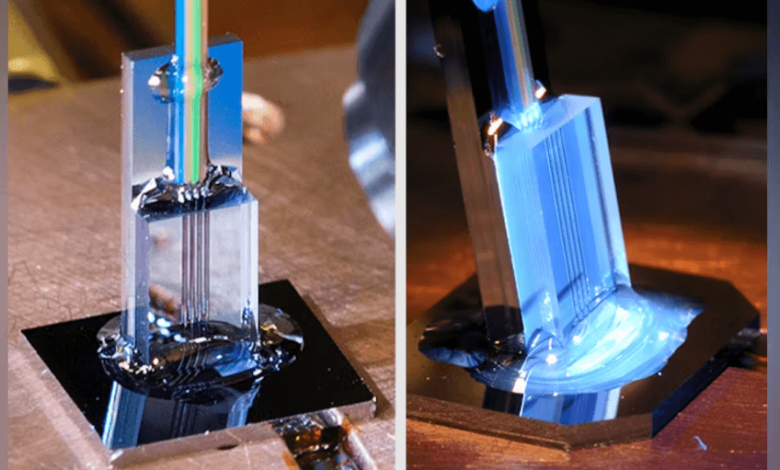Understanding Fiber Array Technology in Modern Electronics

Introduction to Fiber Arrays
The evolution of computers and electronics has led to rapid advancements in optical communication and photonics. Among the essential components enabling high-speed data transmission are fiber arrays. These devices play a crucial role in guiding, aligning, and connecting multiple optical fibers efficiently. Fiber arrays are widely used in applications such as data centers, telecommunications, laser systems, and integrated photonics, ensuring reliable and scalable optical networks.
What is a Fiber Array?
A fiber array is a structured assembly of multiple optical fibers arranged in a precise configuration. These arrays can be linear, two-dimensional, or customized to specific layouts depending on the application. The primary function of a fiber array is to couple optical signals between devices, maintain signal integrity, and reduce insertion losses. Proper alignment of fibers within the array is critical for optimal performance, especially in high-speed and high-power optical systems.
Working Mechanism of Fiber Arrays
The operational principle of a fiber array relies on precise alignment and optical coupling. Each fiber in the array carries an optical signal that can be transmitted to another fiber, a laser source, or a detector. The array ensures minimal cross-talk between channels while maintaining uniform signal strength. Fiber arrays can be used in conjunction with lenses, mirrors, or waveguides to enhance coupling efficiency and focus light precisely onto the target component.
Applications in Data Centers
Data centers require high-bandwidth optical interconnections to handle the enormous volume of information exchanged daily. Fiber arrays provide a compact and efficient solution for connecting multiple optical transceivers, switches, and routers. By using fiber arrays, data centers can achieve lower latency, reduced signal loss, and scalable network configurations. This makes fiber arrays indispensable in modern cloud computing and high-performance computing environments.
Role in Telecommunication Systems
Telecommunications networks depend on precise optical connections for long-distance data transmission. Fiber arrays are used in multiplexing and demultiplexing systems, optical switches, and amplifiers. They ensure that multiple signals fiber array can be transmitted simultaneously without interference, improving overall network reliability. Additionally, fiber arrays facilitate the deployment of dense wavelength-division multiplexing (DWDM) systems, which significantly increase the capacity of optical communication links.
See also: Latest Innovations in Solar Panel Technology
Advantages in Laser and Photonics Systems
Fiber arrays are extensively used in laser technology and photonics research. They enable the simultaneous coupling of multiple laser beams into a single optical system or detector array. This capability is crucial in applications like spectroscopy, optical sensing, and material processing. The high precision and stability of fiber arrays allow for consistent performance, even in systems requiring high optical power or extreme environmental conditions.
Design and Manufacturing Considerations
The design of a fiber array involves careful consideration of fiber spacing, alignment tolerance, and material properties. Manufacturers use high-precision techniques such as V-groove etching, laser welding, and micro-optic integration to assemble fiber arrays with minimal loss and high durability. The choice of fiber type, such as single-mode or multi-mode, depends on the intended application and performance requirements. Quality control is critical to ensure that each fiber in the array meets strict specifications.
Challenges in Fiber Array Technology
Despite their advantages, fiber arrays present certain challenges. Aligning multiple fibers with micrometer precision requires sophisticated equipment and skilled labor. In addition, thermal expansion, mechanical stress, and environmental factors can affect performance over time. Advanced packaging and protective coatings are often used to mitigate these issues, ensuring long-term reliability in demanding applications.
Future Trends in Fiber Array Development
The future of fiber array technology is closely tied to the growth of high-speed optical networks, quantum communication, and integrated photonics. Researchers are exploring new materials, miniaturized designs, and automated assembly techniques to enhance performance and reduce costs. Innovations such as photonic integrated circuits and multi-core fibers are expected to complement fiber arrays, enabling even faster and more efficient optical systems.
Conclusion
Fiber arrays have become a cornerstone in the field of computers and electronics, providing efficient and reliable optical connections for a wide range of applications. From data centers and telecommunications to laser systems and photonics research, fiber arrays ensure high performance, scalability, and signal integrity. With ongoing advancements in design, manufacturing, and integration, fiber arrays will continue to play a critical role in shaping the future of optical communication and electronics technology.
